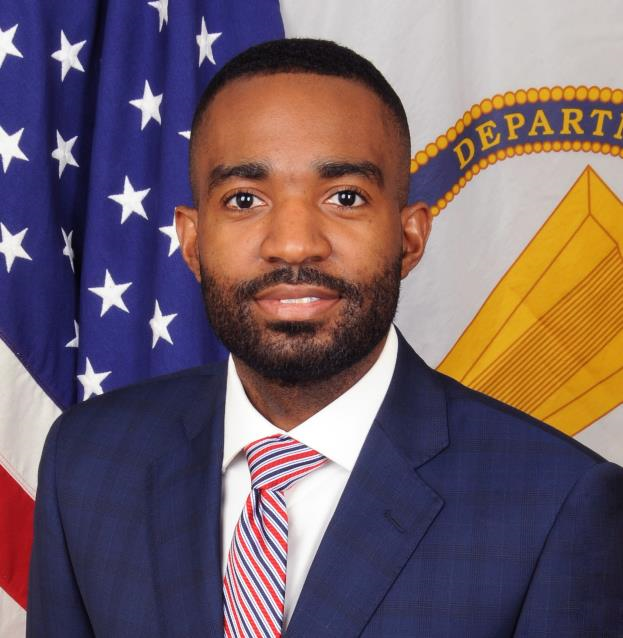The Army Corps of Engineers operates in both the military and civilian realms, whether dredging bases to maintain warship access to bases or looking after the health of dams and levees that protect cities. Its information needs match the diversity of its missions.
Many of its mission critical information systems are nearing the end of their lifecycles. Therefore, said Dovarius Peoples, the Corps’ chief information officer, among “major efforts and initiatives we’re focusing on in fiscal year 2021 is a systems modernization. A lot of our automated information systems are pretty much at the end of life.
Among the goals of modernization are better cybersecurity and greater efficiency at deploying new systems. Peoples said those will take two forms. First, on the cyber front, the Corps aims for zero trust network architectures. Second, on the efficiency front, it wants a system for continuous authority to operate (ATO) to replace the slow ATO process that federal systems deployments usually have.
Peoples said that, in parallel with a strategy the Army Headquarters is pursuing, the Corps will become a data-driven organization.
“We’re focused more on enabling master data sources, being able to access data in real time, and allowing our senior leaders to make more authoritative decisions with the data,” Peoples said. Corps leadership in turn wants to ensure that operators at all levels can easily access any data relevant to their work.
Like nearly every federal organization, the Army Corps of Engineers found itself forced into telework by the pandemic. Earlier an accidental and potentially disastrous cut of a fiber optic line in Vicksburg, Mississippi forced a rapid expansion of virtual private network capacity expansion. Peoples said that incident meant “once we got operational and started to operate in a Covid environment, we now have 24,000 30,000 users leveraging the VPN daily.”
Add up all of these trends – widely distributed VPN capacity, the move towards data orientation, and the mission applications overhaul – no wonder the Corps is also pursuing a hybrid cloud capacity.
The goal, Peoples said, is what he called a triple active infrastructure combining two major Corps data centers and the use of several commercial cloud services providers including Oracle. He said that arrangement will mean no downtime.
“It will also allow us to effectively have ease of access from our access points to wherever you are in the nation, to be able to effectively access to the network and the environment. We’ll continue to try to enhance the end user experience for our users,” Peoples said.
The Corps, Peoples said, is now going through a process of application rationalizing, deciding what needs retirement, rework, or replacement. Where the IT staff will eventually host a given application will depend on several factors, Peoples said, including the connectivity bandwidth available in a given location.
The Corps operates in nine divisions covering 55 locations, from urban to highly rural spots. “Every geographical location inside the United States [has] different connectivity, from the outskirts of Montana, all the way up to the Walla Walla, Washington area. So when it comes to connectivity, you just can’t guess how that will how optimal that will be,” he said.
Cloud is also “baked in” to the goal of continuous authority to operate, Peoples said. Continuous ATO requires continuous, and not periodic, assurance of cybersecurity, consistent with the agency’s risk management framework. He said Corps now monitors networks and applications daily.
“That has enhanced how we do business, on premise and in the cloud, he said. “And it enhances how we work with our mission partners that provide us software-as-a-service capabilities inside of those cloud environments. It’s also challenging them to think of accreditations in a continuous manner, versus a snapshot in time.” He added that many of the security monitoring and patching capabilities will themselves originate as cloud-provided services.
Working with cloud brokers and the CSPs themselves, Peoples said the Corps is becoming ever-more educated about the optimal way to host an operate its applications and data sources.
He added, “It’s definitely a partnership.”
Technology Priorities at the U.S. Army Corps of Engineers
Hopefully, within the 2021 fiscal year, we will be able to effectively build out our cloud environment, which will give us our triple active architecture that we're looking for. which means we'll never have any downtime as we migrate, modernize, and effectively secure through patching and patch management our major mission applications.
Dovarius Peoples
Chief Information Officer, U.S. Army Corps of Engineers
How do we ensure that you have access to your data in real time, to have not just a raw data, but it makes sense to an end user? Then ensuring that the platform is safe, stable and solid, whether in a cloud environment, or an on premise environment? That's critical, so we're definitely excited to be on that journey.
Dovarius Peoples
Chief Information Officer, U.S. Army Corps of Engineers
Listen to the full show:
Copyright
© 2024 Federal News Network. All rights reserved. This website is not intended for users located within the European Economic Area.









